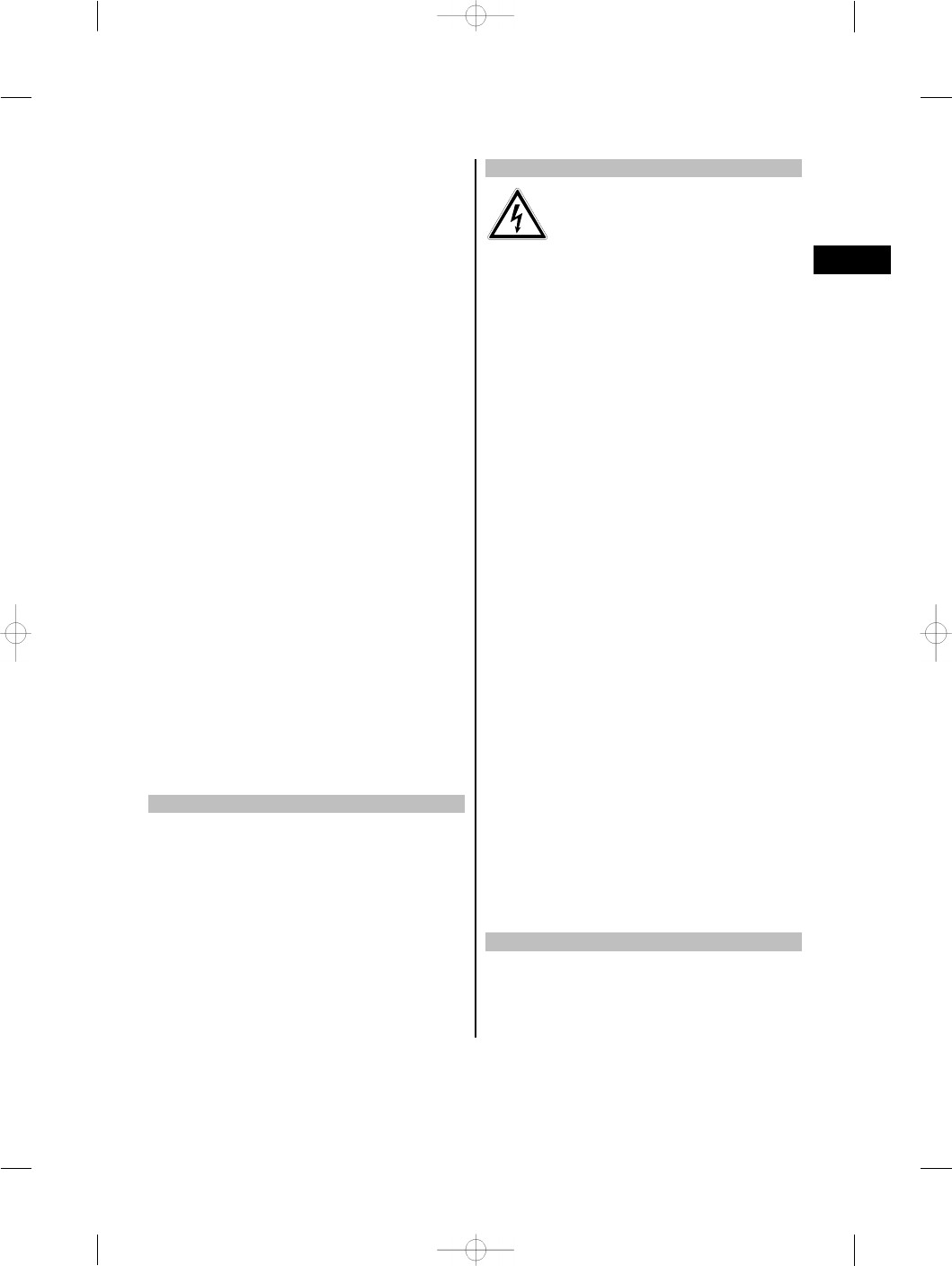
workpiece. Touching rotating parts, especially
rotating insert tools, may lead to injury.
e) Always lead the supply cord and extension cord
away from the power tool to the rear while
working. This helps to avoid tripping over the
cord while working.
f) Children must be instructed not to play with the
power tool.
g) The power tool is not intended for use by chil-
dren, by debilitated persons or those who have
received no instruction or training.
h) WARNING: Some dust created by grinding,
sanding, cutting and drilling contains chem-
icals known to cause cancer, birth defects,
infertility or other reproductive harm; or seri-
ous and permanent respiratory or other injury.
Some examples ofthese chemicals are: leadfrom
lead-based paints, crystalline silica from bricks,
concrete and othermasonry products and natural
stone, arsenic and chromium from chemically-
treated lumber. Your risk from these exposures
varies, depending on how often you do this type
ofwork. Toreduce exposuretothese chemicals,
the operator and bystanders should work in a
well-ventilated area, work with approved safety
equipment, such as respiratory protection ap-
propriate for the type of dust generated, and
designed to filter out microscopic particles and
direct dust away from the face and body. Avoid
prolonged contact with dust. Wear protective
clothing and wash exposed areas with soapand
water. Allowing dust to get into your mouth,
eyes, or to remain on your skin may promote
absorption of harmful chemicals.
5.3.2 Power tool use and care
a) Secure the workpiece. Use clamps or a vice
to secure the workpiece. The workpiece is thus
held more securely than by hand and both hands
remain free to operate the power tool.
b) Check that the insert tools used are compatible
with the chuck systemand that they are secured
in the chuck correctly.
c) Switch the power tool off and unplug the supply
cord in the event of a power failure or inter-
ruption in the electric supply. This will prevent
accidental restarting when the electric power re-
turns.
5.3.3 Electrical safety
a) Before beginning work, check the working area
(e.g. using a metal detector) to ensure that
no concealed electric cables or gas and water
pipes are present. External metal parts of the
power tool may become live, for example, when
an electric cable is damaged accidentally. This
presents a serious risk of electric shock.
b) Check the power tool’s supply cord at regular
intervals and have it replaced by a qualified
specialist if found to be damaged. If the power
tool’s supply cord is damaged it must be re-
placed with a specially-prepared supply cord
available from Hilti Customer Service. Check
extension cords atregular intervals and replace
them if found to be damaged. Do not touch the
supply cord or extension cord if it is damaged
while working. Disconnect the supply cord plug
from the power outlet. Damaged supplycords or
extension cords present a risk of electric shock.
c) Dirty or dusty power tools which have been
used frequently for work on conductive mater-
ials should be checked at regular intervals at
a Hilti Service Center. Under unfavorable cir-
cumstances, dampness or dust adhering to the
surface of the power tool, especially dust from
conductive materials, may present a risk of elec-
tric shock.
d) When working outdoors with an electric tool
check to ensure that the tool is connected to the
electric supply by way of a ground fault circuit
interrupter (GFCI) with a rating of max. 30 mA
(tripping current). Use of a ground fault circuit
interrupter reduces the risk of electric shock.
e) Use of a ground fault circuit interrupter (GFCI)
with a maximum tripping current of 30 mA is
recommended.
5.3.4 Work area safety
a) Ensure that the workplace is well lit.
b) Ensure that the workplace is well ventilated.
Exposure to dust at a poorly ventilated workplace
may result in damage to the health.
en
7


















